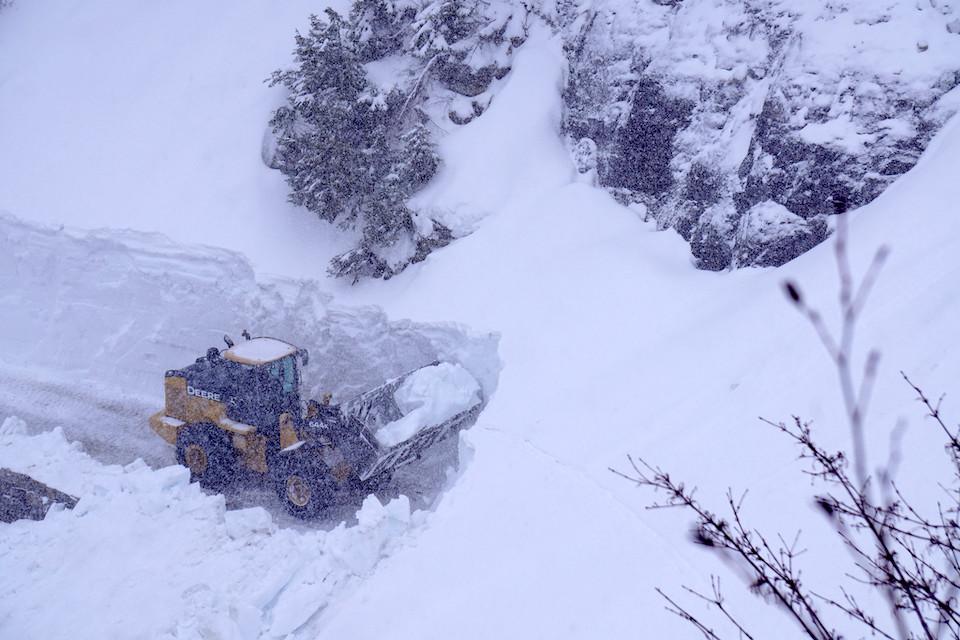
Heavy snow makes clearing Glacier National Park's Going-to-the-Sun Road a time-consuming task in spring. Most cleared areas of the road are opening to cyclists in spring/NPS
Warm breezes and "chamber of commerce" blue skies make spring an ideal time to get out into the national parks, but in those parks with snow still in the mountains visitors have to watch for both hungry bears coming out of hibernation and the potential for avalanches.
Pedaling up the iconic Going-to-the-Sun Road in Glacier National Park in Montana before snow is fully removed and vehicles are allowed on it can be a spectacular, seemingly carefree, experience. Paying attention to your surroundings can ensure it's a safe roundtrip, notes Glacier Superintendent Jeff Mow.
“A lot of people think about all of the supplies they need and the conditions they’ll encounter when heading out for a hike in the park,” said Mow. “Some folks don’t take the same precautions or recognize hazards when heading out for a bike ride on the (Going to the) Sun Road, but the same forethought and preparation can make for a much safer trip.”
Avalanches
Hikers and bikers need to be particularly attuned to avalanche-related hazards, similar to those faced by snowmobilers and backcountry skiers exploring Montana’s mountains in the winter, Glacier staff say.
This spring, the park has received multiple reports about close encounters with avalanches along the Going-to-the-Sun Road and in the backcountry. Plow crews and visitors have encountered multiple avalanches crossing areas already plowed in the last two weeks, particularly in the Triple Arches area.
Avalanches that begin out of sight near the tops of the highest peaks can impact the road thousands of vertical feet below without warning.
Snow avalanches on the Going-to-the-Sun Road corridor are capable of reaching the road and depositing debris piles more than 30 feet deep.
Spring avalanches along the Going-to-the-Sun Road can occur during and after snow storms, during and after rain, and on sunny days as snow softens.
Visitors should watch out for “snowballs” falling on the road from above, which can be an early warning of an avalanche. Hearing avalanche activity in the distance also means avalanche danger in the area is high.
Hikers and bikers also should learn to spot avalanche chutes and pay close attention as they walk or cycle past these areas. Avalanche chutes can often be identified by a lack of trees, many downed trees, or vegetation growing in a downward direction. Never stop for a drink of water or a photo near an avalanche chute.
People can minimize avalanche-related risks by riding portions of the Going-to-the-Sun Road below significant avalanche terrain. Though a few slide areas exist below the Loop, most exist beyond that point in the alpine section of the road.
Bears
Bears present another potential hazard for hikers and bikers. Currently, most of the Going-to-the-Sun Road is posted with warnings of “bear frequenting” as bears forage along road shoulders. Everyone should carry bear spray while recreating in the park, and be familiar with how to use it under pressure.
While visitors should be vigilant for avalanches and bears, Glacier officials remind bikers not to overlook a few simple, everyday guidelines for safe cycling in the park.
“We talk a lot about some of the extreme hazards along the Going-to-the-Sun Road,” said Mow. “However, one of the best and easiest things people can do to lower their overall risk is wear a helmet, reduce speed, and watch for rocks.”



Add comment